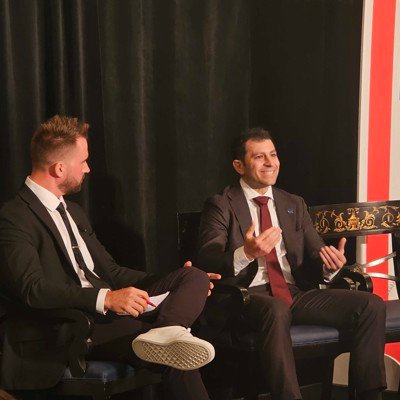The General Services Administration’s ongoing work to take on substantially all of the government’s purchasing of what it calls “common goods and services” is not too different from how retail giants operate.
At least, that is how GSA’s acting administrator and deputy administrator Stephen Ehikian wants industry to understand it.
Speaking at GovExec’s Government Efficiency Summit on Thursday, Ehikian told attendees GSA’s effort aims to return the agency to “what it was” as the government’s central procurement authority for buying those common goods and services.
That means GSA is “looking at all the price tags across the government,” Ehikian said. Other agencies have received more funding and authority over the years to buy their own goods, which Ehikian said has resulted in a “huge delta” of certain costs between different agencies.
In one example, Ehikian said a Microsoft Office license can have a $200-per-seat differential between a small agency and a large agency. That delta will essentially disappear if all goes according to plan.
“The outcome of this will be: think like Costco and Walmart, you have one wallet to purchase all of your goods,” Ehikian said. “The United States government is the number one customer in the world, so we can actually act like that.”
GSA’s OneGov strategy is a primary mechanism for the agency to sign pacts with large, commercial technology providers that cover the entire federal government. Most recently, GSA inked a rideshare blanket purchase agreement with Uber that covers both federal employees and contractors.
Cost-cutting is one of, if not GSA’s main goal, with the OneGov approach that has also resulted in similar arrangements with software giants.
Google, Oracle, Adobe, Salesforce and Elastic have all signed onto OneGov as a way to establish discounted pricing structures that match up with high-volume government activities. GSA has a similar master agreement in place with Microsoft.
Ehikian said GSA has a “pipeline of deals coming down” for OneGov, indicating that more tech companies and others are poised to become part of the fold too.
“We want to do deals, we want to work together,” Ehikian said. “We just want to make sure we are seen as the best customer in the world and we get the best value for the deals.”
An overhaul of FedRAMP, the program GSA runs to authorize cloud products for government use, is also on the agency’s agenda under that theme of making the federal customer more straightforward to work with.
In March, GSA unveiled FedRAMP 20x as the next iteration of the Federal Risk and Authorization Management Program and one that introduces more automated security validations into the process.
Ehikian said under the current setup, companies and agencies have to go through a manual checklist of protocols and controls to get a product FedRAMP-certified. That process can take up to a year for everyone to work through.
GSA’s goal for FedRAMP 20X is to process that new product within weeks instead, Ehikian added.
But however a company wishes to enter the federal landscape, Ehikian said it is crucial for companies to do their homework ahead of time before showing the government what they have to offer.
“Come in with a perspective and opinion, identify problems to solve and how your solution can solve it, and a demo is great as well,” Ehikian said, adding that they should also be ready to answer the question about willingness to partner with the government directly.
“Software is going through a golden period right now,” Ehikian said. “There’s so many great vendors out there, we want (them) to come to the government and we want to embrace that.”



